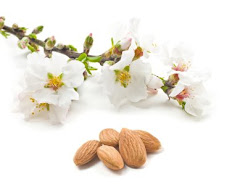Why green juice?
Well, for me, it's the taste and texture of green juice that wins over green smoothies, and any nutritional losses are at least partly outweighed by the fact that my family are far more willing to 'drink their greens' in a juice than a smoothie. It's a great way of consuming far more green leaves than we might feel like eating in a salad, so juices made from, for example, spinach or kale can pack in the Vitamins A, C, K, the minerals magnesium, iron and calcium, and other vital nutrients. And the 'wasted' pulp? Returns to the ground via the compost heap.

Juices, like smoothies, are easy to digest, meaning that our bodies can divert energy to detoxification ('house-cleaning'). Juices made from green leaves are highly alkalising. Our daily activities produce acid, and alkalising foods help our bodies achieve balance. Illness will thrive in an acidic body, and processed food, cooked meat, fish, dairy, grains and alcohol all contribute towards making our bodies over-acidic. My husband, although he's more raw than he used to be (due to my delicious raw meals of course) still consumes some cooked food and alcohol. But, after his first green juice he actually rang me from work to say how surprised he was that he hadn't experienced the usual 10 am 'gnawing' feeling in his stomach. That 'gnawing', that is so often felt by cooked-food eaters, even just a few hours after eating, is often confused with hunger, resulting in cravings and over-eating. It's also sometimes experienced by those in the early stages of a raw diet, as the body adjusts. Here's William Hay, MD, on that: '...arrange the feeding habits so that no gnawing will ever again occur, even when the stomach is entirely empty. Every gnawing feeling is evidence that the stomach contains a very uncomfortable amount of acid, the acid debris that follows the meal...' In my second year of raw, I never experience that 'gnawing', even after 24 hours without food.
Before moving on, there is one investment needed for green juicing, but one that will be repaid so hugely in terms of your health and enjoyment.
Which juicer?
Basic 'centifrugal' juicers (£30-100) juice by cutting and straining. They can do a terrific job with fruit and many vegetables, but won't 'cut it' with green leaves. For these, a 'masticating' juicer is needed (but note that even the popular Champion doesn't cope well with fibrous greens - and it doesn't juice wheatgrass). So, if you're going to be juicing greens as well as fruit and other veg, make sure that the juicer you buy is up to the job. There are several masticating juicers in the medium price range, including the Oscar, Matstone and Samson (£100-200) that will juice all types of greens. These are 'single gear' juicers.

Top of the range are the Green Power/Kempo/Hippocrates (around £300, so shop around). These are the most efficient juicers of all, and also include magnets which produce a magnetic field which helps extract more minerals during the juicing process.
I have an Oscar 900 and, although it squeaks a little (not sure why), has faithfully juiced everything put into it every day for several months now. And I can take it apart and clean it in a minute or two.
So, what about the taste...
Some say the cleaner the body, the better a juice made exclusively from green leaves will taste.
Personally I quite like the taste of green leaf-only juices, but love them when they're sweetened with apple, so perhaps my body has a little way to go! In the meantime, I'll share with you a recipe for a juice that should be popular with raw and non-raw people alike.
The key ingredients are (apart from the star of the show of course!): celery (the salt element) and apple (the sweet element).
Juice: 2 cups of spinach (tightly-packed), 1 long stick of celery, 1 apple (I use a Granny Smith).
Here's a pic, taken next to my 'Christmas Rose' , or helleborus (that actually never flowers before February).
Variations: Replace 1/2 to 1 cup of spinach with other green leaves, such as lambs lettuce, rocket or kale. Try adding a little mint, and floating a sprig on top.
Drink it up quick!
Do drink freshly-made juice straight away, as juices start to oxidise as soon as they're exposed to air. In as little as 20 minutes they can lose a lot of their nutrition. David Wolfe ('Sunfood Diet Success System'): 'We can see the colloidal leaf minerals (eg calcium, in green leaves) precipitate out of freshly-made, green juices if we allow the juice to sit and lose energy. As a juice loses energy (zeta potential) it begins to change from an alkaline medium to an acid medium; it no longer has the energy to hold minerals in suspension.' There...(you knew that, didn't you)
.
.
Just before Christmas, I was feeling a little pathetic one evening (I moan when it's cold, despite being raw - I haven't managed to emulate the Boutenko family, who sleep outdoors in the winter). It was the sort of evening that, in a past-never-to-be-revisited, would have called for a g & t. I made a green juice, served it in a wine glass (thanks to Karen Knowler for that idea!) and snuggled by the fire. It was...nectar. Cheers!
_____________________________________________
If you found this article useful, please consider forwarding it to others.
Feedblitz subscribers can access previous articles at www.debbietookrawforlife.blogspot.com
For free information on raw food, and classes, visit www.rawforlife.co.uk
If you found this article useful, please consider forwarding it to others.
Feedblitz subscribers can access previous articles at www.debbietookrawforlife.blogspot.com
For free information on raw food, and classes, visit www.rawforlife.co.uk














1 comment:
That's just what I'm going to do. go downstairs and have a parlsey green smoothie. I'm so glad you and so many other bloggers are making the green drinking more popular.
Post a Comment